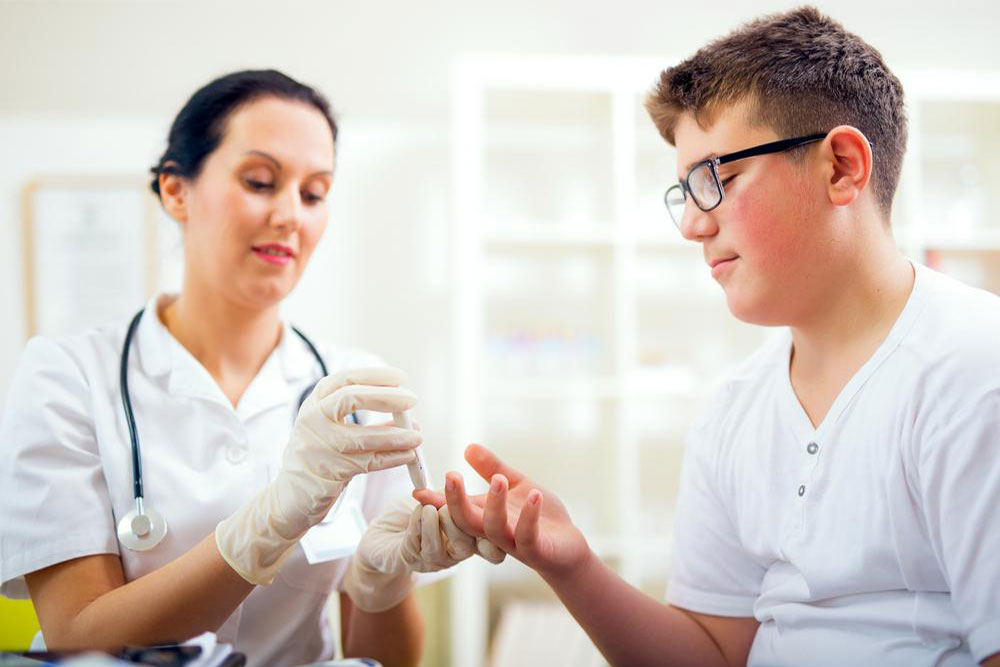Comprehensive Guide to Recognizing and Understanding Gangrene: Types, Symptoms, and Early Indicators
This comprehensive guide explores gangrene, detailing its main types—dry and wet—as well as rare forms like gas and Fournier’s gangrene. It emphasizes early warning signs, causes, and prevention methods, highlighting the importance of prompt medical intervention to avoid serious complications. Perfect for health-conscious individuals and at-risk populations, this article aims to raise awareness about this critical condition and encourage early diagnosis for better health outcomes.

Understanding Gangrene: Types, Warning Signs, and Critical Prevention Tips
Gangrene is a serious medical condition characterized by the death of body tissues resulting from a lack of blood supply and oxygen. While it most commonly affects extremities such as fingers, toes, and limbs, it can also occur in internal organs, posing significant health risks. Early diagnosis and prompt treatment are vital to prevent severe outcomes such as amputation, chronic infections, and even death. In this comprehensive guide, we delve into the different types of gangrene, their causes, symptoms, and essential warning signs to watch for, giving you the knowledge to seek urgent medical attention when necessary.
Understanding the fundamentals of gangrene is crucial for everyone, especially those with predisposing health conditions like diabetes, peripheral vascular disease, or immune system deficiencies. Recognizing early indicators can significantly improve prognosis and quality of life. Let's explore the different types of gangrene, their distinctive features, and how to identify them promptly.
Types of Gangrene: Dry and Wet
There are primarily two main categories of gangrene—dry and wet—that differ in their progression, appearance, and underlying causes. Recognizing these differences is essential for early diagnosis and treatment planning.
Dry Gangrene: This form of gangrene develops gradually over time and is often associated with chronic conditions such as diabetes mellitus, atherosclerosis, or peripheral artery disease. It usually results from arterial blockages that restrict blood flow to the affected tissues, leading to tissue death. The skin affected by dry gangrene becomes dry, shrunken, and darkened, typically exhibiting a black or brown coloration. The skin may appear shriveled and leathery, and in some cases, it may become mummified. Common causes include severe frostbite, Raynaud’s disease, and burns. Patients with dry gangrene often experience minimal pain in the affected area because nerve endings are dead.
Visual Features of Dry Gangrene: The affected skin appears dry, dark, and shriveled, resembling a mummified appearance. There is usually no significant pus or swelling, and the progression can be slow, sometimes spanning weeks or months. The boundary between healthy and dead tissue tends to be well-defined, aiding in clinical assessment.
Wet Gangrene: Symptoms, Causes, and Risks
Unlike dry gangrene, wet gangrene is an acute, rapidly progressing condition characterized by infection and inflammation in the affected tissues. It often results from bacterial infection following injuries, cuts, or ulcers that become contaminated. The bacteria responsible—such as streptococci, staphylococci, or clostridia—produce toxins and gases, leading to the characteristic symptoms of wet gangrene.
This form of gangrene is life-threatening if not treated promptly because the infection can spread quickly through the bloodstream, causing sepsis—a severe, potentially fatal systemic response. Wet gangrene typically involves swelling, blistering, and the formation of pus that has a foul odor. The skin appears swollen, moist, and inflamed with areas that are discolored, often transitioning from red to purple, green, or black shades.
Common causes include: traumatic injuries, infected ulcers, diabetic foot infections, and compromised immune responses. It is more common in immunocompromised patients, including those undergoing chemotherapy or suffering from chronic illnesses.
Visual and Clinical Features of Wet Gangrene: The affected area looks swollen, discolored, and moist with evident pus and foul smell. Blisters filled with pus or blood may be present, and the tissue may feel warm initially but becomes cold as blood flow diminishes. Rapid deterioration is typical, and medical intervention is urgent to avoid systemic infection.
Rare but Severe Forms: Gas Gangrene and Fournier’s Gangrene
Beyond dry and wet types, there are rare but extremely dangerous forms of gangrene that require immediate medical attention.
Gas Gangrene: This dangerous condition is caused by Clostridium bacteria, which produce gas within the tissues. The infection often follows deep wounds, crush injuries, or surgical incisions contaminated with spores. The infected area emits a cracking or popping sound upon palpation, feels cold and tense, and produces a distinctive foul smell caused by gas and bacterial toxins. Swelling and skin discoloration progress rapidly, and systemic symptoms such as fever, rapid heartbeat, and shock are common.
Fournier’s Gangrene: A severe form affecting the genital and perineal regions, Fournier’s gangrene predominantly affects men but can also occur in women and children. It often initiates from urinary tract infections, skin trauma, abscesses, or surgical procedures involving the genital area. This form rapidly spreads through fascial planes, resulting in tissue necrosis and potential septicemia. Early symptoms include swelling, pain, redness, and systemic signs such as fever and malaise.
Recognizing Early Warning Signs of Gangrene
Early recognition of gangrene is vital for effective treatment and preventing life-threatening complications. Keep an eye out for these warning signs:
Shiny, glossy appearance of the skin in the affected area
Skin shedding or peeling with clear demarcation between healthy and dead tissue
Open wounds or non-healing ulcers
Darkening, dryness, or discoloration of the skin
Cold sensation in the involved limb or area
Loss of sensation or numbness
Nausea or vomiting in severe cases
Rapid heartbeat or irregular pulse
Fever or chills indicating systemic infection
Blisters containing pus, blood, or both
If you notice any of these symptoms, seeking immediate medical attention is critical. Early intervention, including antibiotics, surgical debridement, or amputation if necessary, can significantly improve outcomes and save lives.
Preventative Measures and When to Seek Medical Help
Prevention is the best strategy against gangrene. Managing underlying health conditions such as diabetes and circulation issues, maintaining proper hygiene, and avoiding injuries are essential steps. People with chronic health issues should regularly monitor their extremities and seek prompt medical care for any wounds or infections that do not heal.
Promptly addressing minor injuries, cuts, or ulcers—especially in diabetics or immunocompromised individuals—can prevent progression to gangrene. If numbness, discoloration, or skin breakdown occurs, consult a healthcare provider immediately.
Remember, early diagnosis and swift treatment are key to preventing severe complications of gangrene. If you experience sudden pain, swelling, or blackened skin, do not delay—seek emergency medical assistance without hesitation.
In conclusion, awareness of the different types of gangrene, their signs, and early warning indicators can greatly influence the success of treatment and help save limbs and lives. Understanding these details empowers individuals to seek timely care and potentially avoid life-threatening outcomes.





